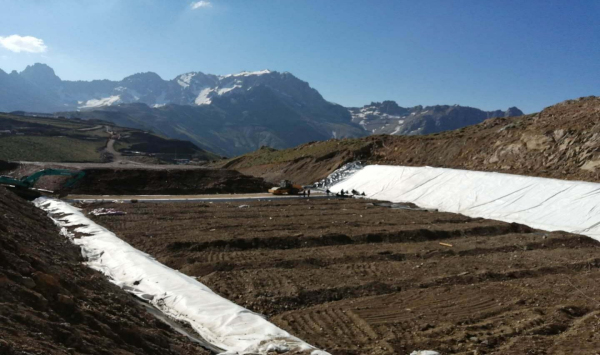During granulation heap leaching, the low-grade gold bearing ore shall be crushed to -25mm or finer in advance to dissociate or expose the gold and silver minerals. After the crushed ore is mixed with Portland cement (ordinary portland cement) of 2.3 ~ 4.5kg/t dry ore, the mixture shall be wetted with water or concentrated cyanide solution to make its water content reach 8% - 16%. The wetted mixture is mechanically rolled into spherical pellets. After curing for more than 8h, it can be sent to pile building for percolation cyanidation heap leaching. The method of heap building and infiltration is the same as that of conventional heap leaching.

During granulation, the function of binder is to increase the agglomeration of fine ore and improve the strength of solidified aggregates. Therefore, the amount of binder is very critical. Its amount is related to the type of binder, ore particle size composition, ore type and its acidity and alkalinity, which is generally determined by experiments. The amount of binder is too small. Although the prepared pellets are well solidified, it is difficult to obtain high-strength pellets. During the infiltration process, they will be broken due to the further wetting of the leaching solution, reducing the percolation of the ore heap. If the amount of binder is too large, the strength of the pellet made is too high, too hard and dense, and its permeability is poor, which is detrimental to the leaching of gold and silver.
The mixture of ore and cement can be wetted with water or cyanide solution. The test shows that it is advantageous to use cyanide solution as wetting agent. Cyanide solution can not only wet the ore binder mixture, but also pre leach the ore, shorten the leaching cycle and improve the gold leaching rate. The amount of wetting agent is related to the particle size composition of ore, the moisture content of ore and the type of binder. When the wetting dose is too small, it is not enough to make fine ore pellets, and when the wetting dose is too large, it can reduce the porosity of pellets. The appropriate amount of wetting agent is to make the moisture content of the mixture reach 8% - 16%.
The mixture of ore and binder is sent to make pellets after being wetted by wetting agent. At present, two granulation methods are used in industry, namely, multi belt conveyor method and drum granulation method. The multi belt conveyor granulation method is to uniformly mix the concentrated cyanide solution, fine ore and cement through the mixing rod at the discharge end of each belt conveyor to make the required pellets. Drum granulation method is to send the mixture of ore and fine ore into the rotating drum, spray concentrated sodium cyanide solution in the drum, and mix the fine ore, cement and cyanide solution evenly to make the required pellets due to the rotation of the drum.
The prepared pellets were cured at room temperature for more than 8h. During curing, the pellets must maintain a certain amount of water content. If the pellets are large and dry, the hydrolysis reaction in the pellets will stop, and such pellets will break locally when encountering water. Therefore, during curing, the aggregates must be kept at a certain humidity in order to obtain solid and non broken aggregates. The curing operation can be carried out separately after granulation or during the stacking process.
In the granulation heap leaching process, because cement is used as the binder, there is no need to add additional protective alkali when cyanide solution is used for leaching, and the pH value of the leaching solution can be maintained at about 11.